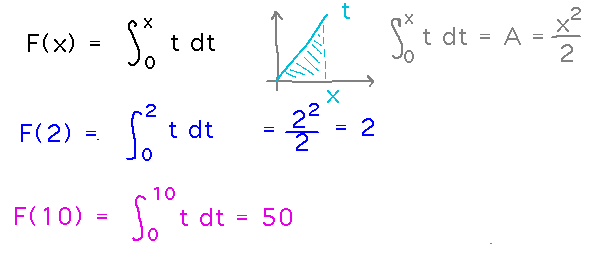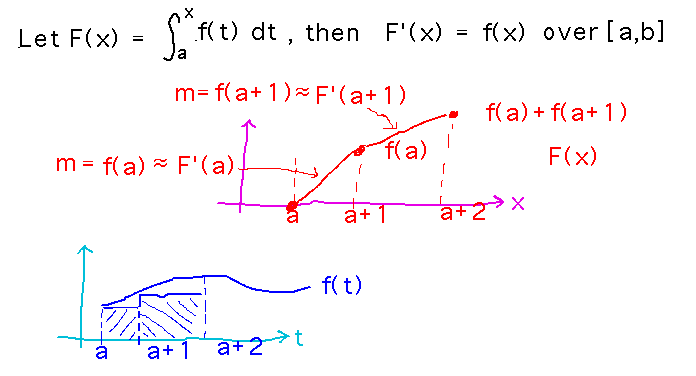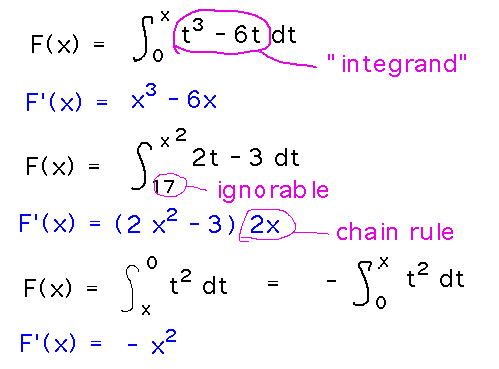Questions?
The Fundamental Theorem of Calculus, Part 1
Intuition
Why does the Fundamental Theorem even make sense in the first place?
Functions. Consider F(x), computed by integrating t from 0 to x. (Note that y = t is just a straight line at 45 degrees to the t axis, so the area under it between t = 0 and t = x is just t2/2.)
Find F(1). How about F(2)? F(10)?

Weird as this function definition may look, it “works” like any other: to apply the function to a specific value, substitute that value for x anywhere x appears in the function (in this case as the bound in an integral), and calculate.
The Theorem Itself. Consider crudely integrating some function f(t) as a sum of rectangles of width 1:

Applications
Find some derivatives of integrals, using the Fundamental Theorem.

Such problems can involve the chain rule (if the upper bound in the integral is a function of x rather than just x), or various properties of integrals (as in swapping the bounds and negating the integral if x appears in the lower bound rather than the upper).
Take-Aways
Defining F(x) as an integral whose upper bound is x actually does make sense.
There is some intuition behind the idea that an integral of f up to some varying x changes at a rate of roughly f(x).
Applying the Fundamental Theorem to differentiate integrals is mostly a matter of substituting x for t in the integrand, subject to some care about the order of integration or the possible relevance of the chain rule.
Next
Thursday: A little about the proof of the part 1 of the Fundamental Theorem.
Friday: Part 2 of the Fundamental Theorem.
- Read the rest of section 5.3 (i.e., the “Fundamental Theorem of Calculus, Part 2: The Evaluation Theorem” subsection).